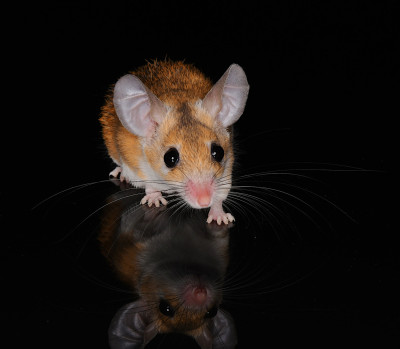Mammalian models
Acomys dimidiatus
"the eastern spiny mouse"
Acomys belongs to the family Muridae in the order Rodentia. It has a wide distribution across the Middle East. It’s a sociable species with a diet mostly consisting of seeds. Sexual maturity is at 3-4 months old and females can produce litters of up to five youngs three to four times a year. The fur is particularly dense and is made of very stiff hair on the lower back. We are investigating spiny mouse hair development and how their follicles are patterned across the skin.

Atelerix albiventris
"the African pygmy hedgehog"
This species belongs to the Erinaceidae family in the order Eulipotyphla. This nocturnal species is distributed in savannah habitats across central Africa from Senegal to Kenya. Its small size (about 20 cm for 500 g), continuous fertility throughout the year, and hardiness make this species a good model for studying the development of spines in mammals. We investigate spine development in the African pygmy hedgehog and how their follicles are patterned across the skin.

Echinops telfairi
"the lesser hedgehog tenrec"
This species, endemic to Madagascar, is classified in the Tenrecidae family. Tenrecs — together with golden moles, elephant shrews, the aardvark, hyraxes, sirenians (dugongs and manatees) and elephants — belong to the superorder Afrotheria which forms one of the oldest lineages of mammals. This means that the lesser hedgehog tenrec is more closely related to an elephant than to a hedgehog! One of our interests is to investigate the convergent development of spines in tenrecs and hedgehogs. We also study how their follicles are patterned across the skin.



